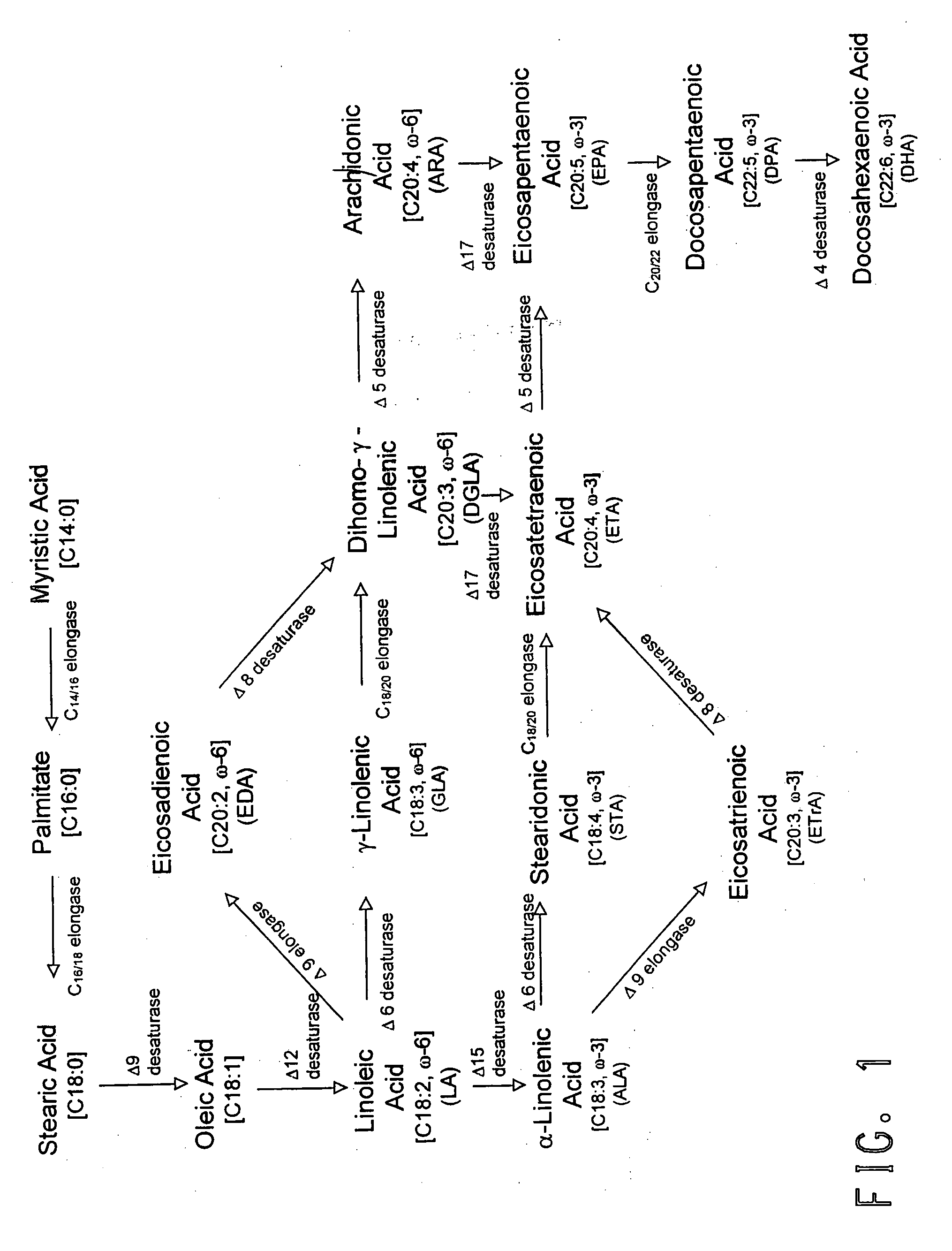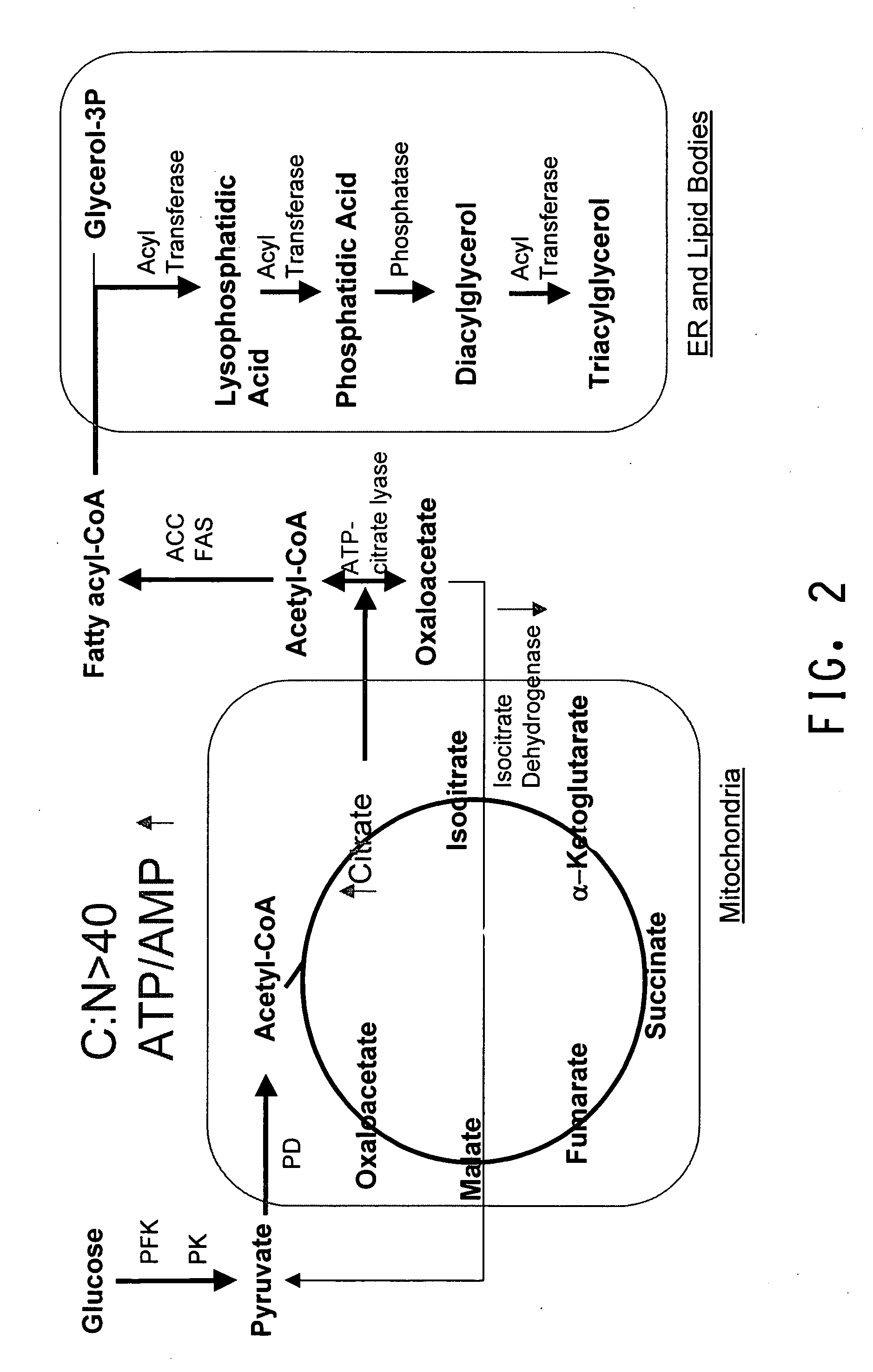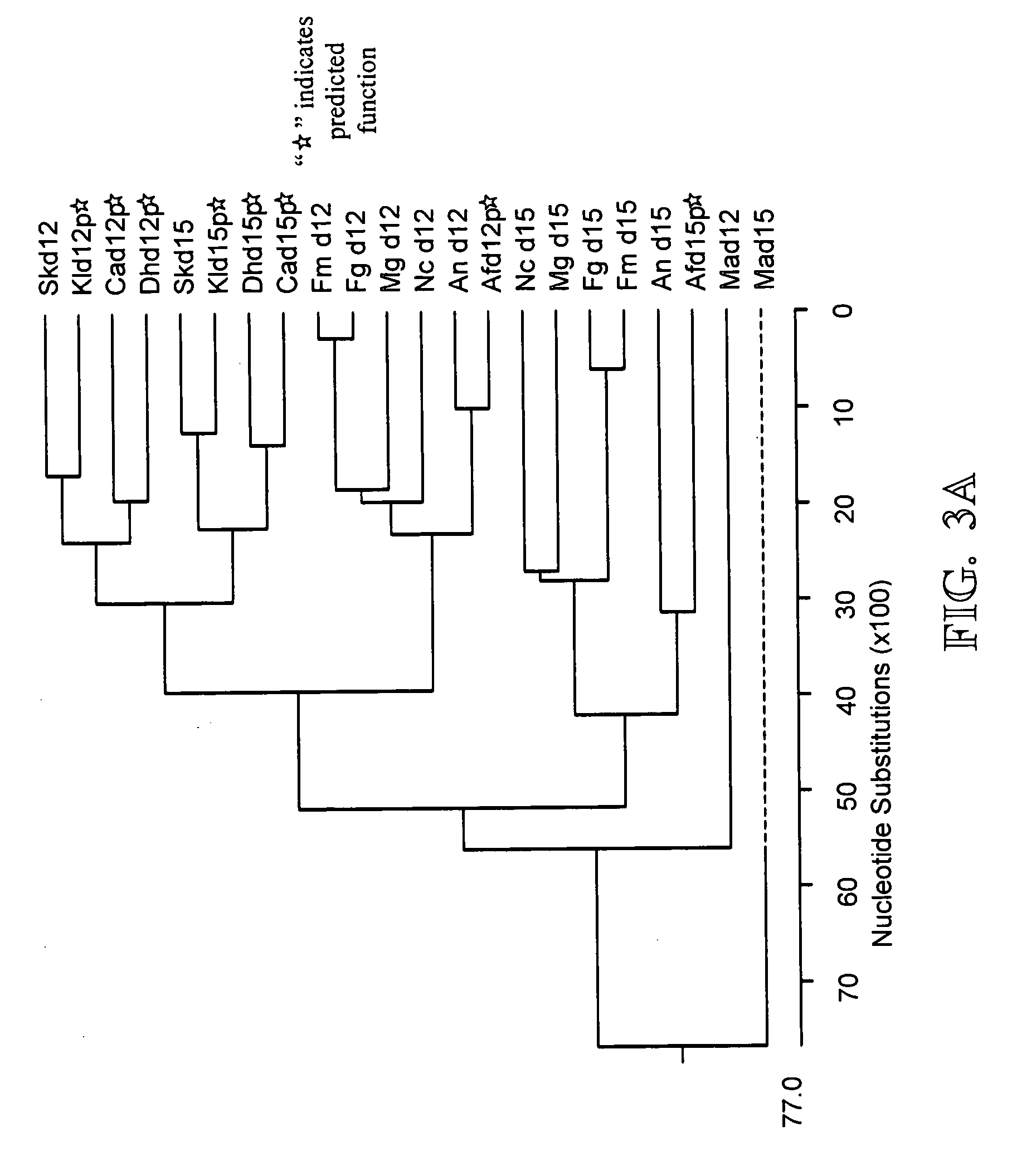High eicosapentaenoic acid producing strains of Yarrowia lipolytica
a technology of yarrowia lipolytica and eicosapentaenoic acid, which is applied in the field of biotechnology, can solve the problems of insufficient supply of -3 fatty acid to meet the growing demand, economic difficulty in removal, and oil being inacceptable as food ingredients
- Summary
- Abstract
- Description
- Claims
- Application Information
AI Technical Summary
Problems solved by technology
Method used
Image
Examples
example 1
Identification of Promoters for High Expression in Yarrowia lipolytica
[0442] Comparative studies investigating the promoter activities of the TEF, GPD, GPDIN, GPM, GPAT, FBA, FBAIN and YAT1 promoters were performed, by synthesizing constructs comprising each promoter and the E. coli gene encoding β-glucuronidase (GUS) as a reporter gene (Jefferson, R.A. Nature. 14(342):837-838 (1989)). Then, GUS activity was measured by histochemical and fluorometric assays (Jefferson, R. A. Plant Mol. Biol. Reporter 5:387-405 (1987)) and / or by using Real Time PCR for mRNA quantitation.
Construction of Plasmids Comprising a Chimeric Promoter::GUS::XPR Gene
[0443] Plasmid pY5-30 (FIG. 7A; SEQ ID NO:126) contained: a Yarrowia autonomous replication sequence (ARS18); a ColE1 plasmid origin of replication; an ampicillin-resistance gene (AmPR), for selection in E. coli; a Yarrowia LEU2 gene, for selection in Yarrowia; and a chimeric TEF::GUS::XPR gene. Based on this plasmid, a series of plasmids were c...
example 2
Identification of Enhancers Useful to Increase Gene Transcription in Yarrowia lipolytica
[0472] Based on the strong promoter activities of FBAIN and GPDIN (wherein activity was greater than that of the FBA and GPD promoters, respectively) and the identification of an intron within each promoter region, the present work was conducted to determine whether enhancers were present in each intron.
[0473] Specifically, two chimeric promoters consisting of a GPM::FBAIN promoter fusion and a GPM::GPDIN promoter fusion were generated to drive expression of the GUS reporter gene. The chimeric promoters (comprised of a “component 1” and a “component 2”) are described below in Table 14.
TABLE 14Construction of Plasmids Comprising A Chimeric Promoter WithinA Chimeric Promoter::GUS::XPR GeneChimericCom-PlasmidPromoterponent 1Component 2NameGPM::FBAIN−1 bp to+1 bp to +171 bp region ofpDMW224(SEQ ID NO:−843 bpFBAIN, wherein the intron is182)regionlocated at position +62 bp toof GPM+165 bpGPM::GPDIN...
example 3
Sulfonylurea Selection
[0476] Genetic improvement of Yarrowia has been hampered by the lack of suitable non-antibiotic selectable transformation markers. The present Example describes the development of a dominant, non antibiotic marker for Y. lipolytica based on sulfonylurea resistance that is also generally applicable to industrial yeast strains that may be haploid, diploid, aneuploid or heterozygous.
Theory and Initial Sensitivity Screening
[0477] Acetohydroxyacid synthase (AHAS) is the first common enzyme in the pathway for the biosynthesis of branched-chain amino acids. It is the target of the sulfonylurea and imidazolinone herbicides. As such, sulfonyl urea herbicide resistance has been reported in both microbes and plants. For example, in Saccharomyces cerevisiae, the single W586L mutation in AHAS confers resistance to sulfonylurea herbicides (Falco, S. C., et al., Dev. Ind. Microbiol. 30:187-194 (1989); Duggleby, R. G., et. al. Eur. J. Biochem. 270:2895 (2003)).
[0478] When...
PUM
 Login to View More
Login to View More Abstract
Description
Claims
Application Information
 Login to View More
Login to View More - R&D
- Intellectual Property
- Life Sciences
- Materials
- Tech Scout
- Unparalleled Data Quality
- Higher Quality Content
- 60% Fewer Hallucinations
Browse by: Latest US Patents, China's latest patents, Technical Efficacy Thesaurus, Application Domain, Technology Topic, Popular Technical Reports.
© 2025 PatSnap. All rights reserved.Legal|Privacy policy|Modern Slavery Act Transparency Statement|Sitemap|About US| Contact US: help@patsnap.com



